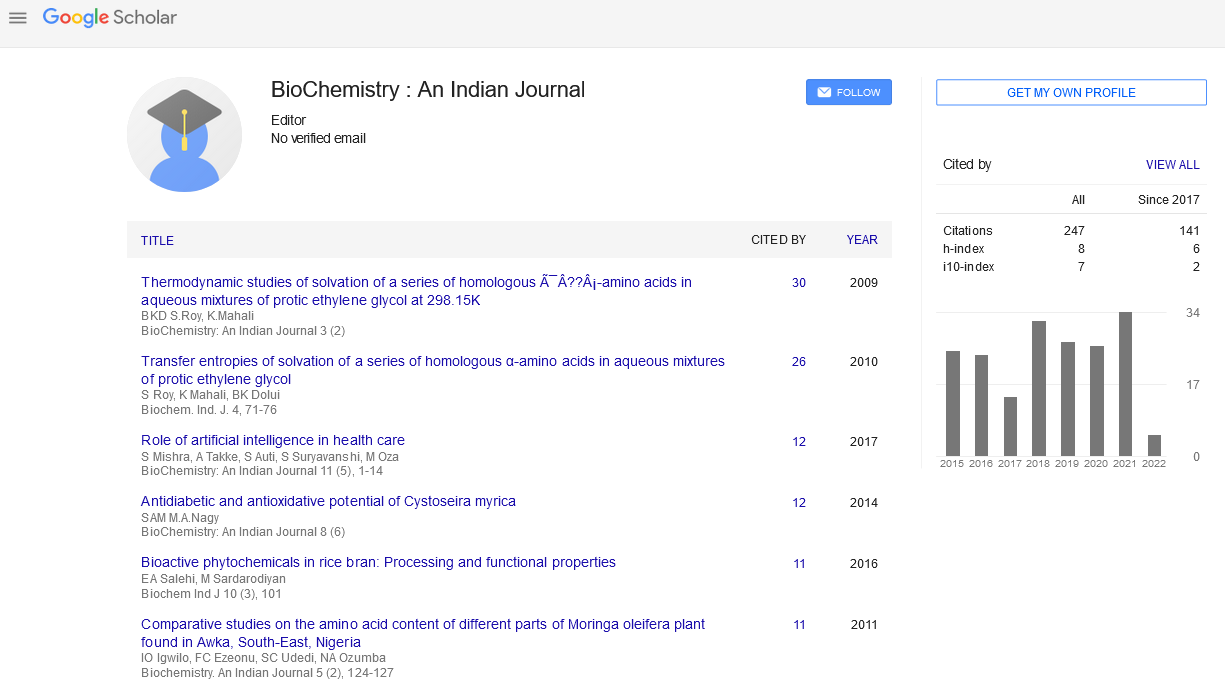Abstract
Role of serum bilirubin as an antioxidant and lipid profile in acute myocardial infarction
Author(s): Parveen Shaikh, N.R.Hazari, A.P.ThoratThe present study was carried out to evaluate lipid profile and bilirubin as a risk factor associated inAMI patients admitted to ICCU. Changes in serum lipid profile and serum bilirubin levels after AMI were analyzed in patients within 24 hours of admittance in ICCU. Blood samples were collected in patientswithAMI (n=20),within 24 hours after the infarct and compared with age, sexmatched normal healthy controls (n=20). Highly significant increase in Non HDL-C and bilirubin level was observed. Significant increase was observed in total cholesterol and LDL-C.All lipid ratios were highly significantly increased inAMI. Serumbilirubin level was significantly lower inAMI smokers as compared to AMI non smokers Endogenous antioxidant serum bilirubin was elevated in AMI in 24 hours which may suggest that there is excess formation of free radicals. Smoking status may also affect serum bilirubin levels. Dyslipidemia was observed in AMI patients which may suggest that these patients may be prone toAMI due to increased free radical generation. SerumLDL-C levels are the main target for lipid management in the majority of guidelines. In our study non-HDLC is highly significantly increased than LDL-C. The NCEP-ATP III recently recommended that non-HDL-C be used as a secondary target of therapy. Our study also recommends the same in patients withAMI as it is less expensive and simpler to use.

